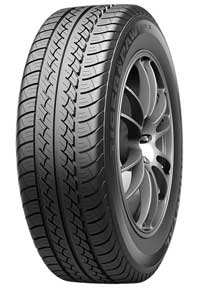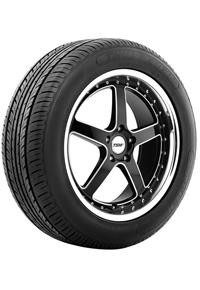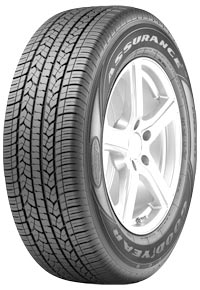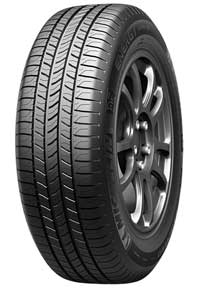Your Shopping Cart
Your cart is empty.
Subtotal ( items)
Instant Rebate Applied:
Promo Code Applied: ID.me Discount Applied:
Have a Promo Code?
Size:
Item
Item
Selected for:
/ each
Add-Ons
Wireless air pump capable of pumping up to 150 psi with 2000 MAH power bank.



Fully protect your clothes and vehicle interior during transportation of your tires. For Tires up to 31" tall and wheels up to 22".
Per sensor
Add TPMS Sensors
/per sensor
Please confirm the make, year, model and trim of the vehicle you want to purchase for:
How many sensors do you need?
The vehicle you have selected is not compatible with aftermarket TPMS Sensors.
Enter a different vehicle to add TPMS sensors

 Front Tire Size:
Front Tire Size:
 Rear Tire Size:
Rear Tire Size:
 Your Vehicle:
Your Vehicle:
Pros & Cons of Staggered Fitment

Attractive Design

Improved Handling

Improved Cornering
Bumpier Ride
Poor Traction in Snow
How do I find my tire size?



Need help?
 Your Vehicle:
Your Vehicle:
Pros & Cons of Staggered Fitment

Attractive Design

Improved Handling

Improved Cornering
Bumpier Ride
Poor Traction in Snow
How do I find my tire size?



Need help?
Pros & Cons of Staggered Fitment

Attractive Design

Improved Handling

Improved Cornering
Bumpier Ride
Poor Traction in Snow
Need help?
Need help?
How do I know if I have an LT tire?

 Your Vehicle:
Your Vehicle:
Sorry, we could not find any available
wheels for your sizing selections.
Need help?
What Is Tire Rolling Resistance, and Why Is It Important?
By Tire Agent Staff
July 12, 2022
Fuel efficiency is always top of mind for drivers, but even more so during inflationary times. As you look for best ways to save gas and how to improve fuel efficiency, you might come across the term "rolling resistance."
You're probably thinking, whoa, whoa, whoa, stop the clock – rolling what? We'll explain what rolling resistance is, if it can be avoided, and why you should care about it.
How Tire Rolling Resistance Impacts Fuel Efficiency
The energy your vehicle must transfer to your tires to keep moving across a surface at a constant speed is known as tire rolling resistance. To put it another way, it is the effort necessary to keep a tire moving.
A process called hysteresis is the primary cause of rolling resistance. In scientific terms, hysteresis is the energy lost as tires roll through their footprint. The vehicle's engine must work harder to compensate for the energy loss, wasting fuel in the process.
Can Tire Rolling Resistance Be Avoided?
Anytime a tire makes contact with the road, rolling resistance will occur. So, no, it can't be avoided. It can, however, be minimized. But how?
Since hysteresis is the root cause of tire rolling resistance, tires can be made with specially formulated tread materials that are more heat-resistant. This results in decreased tire deflection and energy loss.
Manufacturers call these low rolling resistance tires, and they are worth looking into. Especially if you want to save money on gas.
Pros and Cons of Low Rolling Resistance Tires
Let's begin with the pros, shall we?
Advantages of low rolling resistant tires
Low rolling resistance tires help maximize fuel efficiency and can be significantly more fuel-efficient than standard tires.
According to the U.S. Department of Energy, "a 10% reduction in rolling resistance would improve fuel economy approximately 3% for light- and heavy-duty vehicles."
You might be thinking that 3% doesn't sound like a lot for passenger cars, though. But think of the big picture. Let's say you spend $5,000 per year on gas. A 3% savings would add up to about $150 for the year. That's around $750 over the course of five years. Not too shabby over the life of the tires.
Rolling resistance is a big deal, as you can imagine, for commercial trucks that log thousands of miles every week.
Now for the cons of rolling resistance tires
Disadvantages of low rolling resistant tires
Reducing tread depth is one method used by tire makers to lower rolling resistance. Unfortunately, this will decrease the tire wear life. So, you might need to buy tires sooner than with conventional models.
One more thing to think about is safety. Reduced tread depth means less rubber on the road. This can lessen grip, impacting stopping and starting, especially on wet surfaces. Keep rolling resistance tires fully inflated to get the best performance. This will help combat the less rubber issue.
With all that said, today's tire manufacturers have created some amazing rubber compounds that offer excellent fuel efficiency, safety and treadwear. Check out Yokohama Avid Ascend GT, for an example. This all season tire has low rolling resistance, and a 740 treadwear rating, which is higher than the average of 504 across all brands (see our Guide to Tire Treadwear Ratings for an explainer on treadwear).
Do Tires Have Roll Resistance Ratings?
No, you won’t see roll resistance ratings on the side of a tire like you do for things like load index and speed rating. However, tire professionals know the ins and outs of every model and can help you find exactly what you're looking for. If saving money on fuel is something you're looking for, a tire professional can help.
As you search for tires on TireAgent.com, you can use filters to select "fuel efficient," which will narrow your options to tire models that manufacturers have identified as fuel efficient. If you need help or have questions, you can always contact a Tire Agent expert by live chat, phone or email.
List of Low Rolling Resistance Tires
To find tires that fit your vehicle, use Tire Agent's tire-matching tool. Here are just a few makes and models of tires that are low-rolling resistance tires (photos from L to R):
- Continental Crosscontact LX-E
- Uniroyal Tire Paw AWP II all season
- Thunderer Mach II R301
- Goodyear Assurance cs Fuel Max
- Michelin Energy Saver A/S
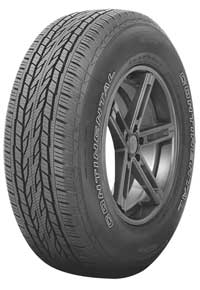
Next Post:
Best Tires For Electric CarsHow to Qualify for the $50 Offer
- Add items to your cart and begin checkout.
- Select PayPair and apply for financing.
- If you’re approved by a participating lender, you’ll see a $50 promotional rebate applied to your order total.
-
To receive the $50, you must:
- Complete your purchase with a qualifying lender,
- Agree to the payment terms,
- And make the required number of consecutive on-time payments, as specified by the lender.
Note: Offer available only through select lenders. Additional eligibility requirements and conditions apply. Rebate may be issued after verification of qualifying payment activity. Terms subject to change.
How to Purchase Tires and Wheels
With a Payment Plan
Tire Agent's payment plans make it easy to get the best partial or full set of tires and wheels for your vehicle.
It's fast, secure and won't affect your credit score
Match with multiple lenders
Why Choose PayPair?
PayPair’s Partners and Plans

No Money Down

No Money Down

No Credit Needed*

No Money Down

$1 to Start!*

No Money Down

No Credit Needed*

$1 to Start!*

No Money Down
Other Payment Plans

$0 to Little Down

Pay with your bank account

Simplified checkout experience

Faster and easier than using cards or cash

Simplified checkout experience

Faster and easier than using cards or cash
*SNAP: The advertised service is a lease-to-own agreement provided by Snap RTO LLC. Lease-to-own financing is not available to residents of Minnesota, New Jersey and Wisconsin. NO CREDIT NEEDED: Not all applicants are approved. While no credit history is required, Snap obtains information from consumer reporting agencies in connection with applications, and your score with those agencies may be affected. PAYMENT PLAN: The standard plan consists of renewable lease terms. To exercise an early ownership, consumers must make regular payments on time and schedule additional payments via the customer portal or by contacting Customer Care at 1-877-557-3769. KATAPULT: The Promotional Initial Payment (plus any applicable taxes and fees) is due at lease signing. Your lease-purchase payment amount will be determined after you select your product(s). You will not acquire ownership of the product(s) if the total amount necessary to acquire ownership is not paid. The Promotional Initial Payment does not reduce the cost of the lease-purchase agreement. The Promotional Initial Payment is only available when shopping at Tire Agent through the Katapult mobile app and at Tire Agent’s website. Product pricing subject to change and availability. Disclosure: 90-day early purchase option (EPO) terms and conditions apply: 90-Day (3 months in CA) You can buy out your lease-to-own agreement within the first 90-days. This amount includes the cash price, plus the lease-to-own cost for the first 90-days. Taking advantage of the 90-day purchase option will save you the most money! PROGRESSIVE: Ownership by rental/lease agreement with Progressive Leasing costs more than the retailer’s cash price. Select items only. Cancel or purchase early at any time. Not available in MN, NJ, VT, WI, WY. Progressive Leasing obtains information from credit bureaus. Not all applicants are approved. Standard agreement offers 12 months to ownership. 90-day purchase options cost more than the retailer’s cash price (except 3-month option in CA). To purchase early or to cancel lease, you must call 877-898-1970. Retailer cannot activate early purchase options.


